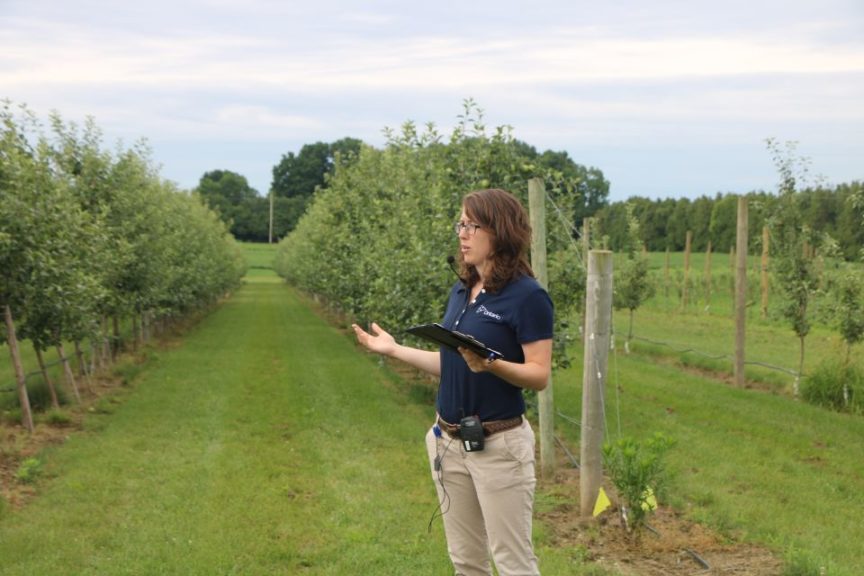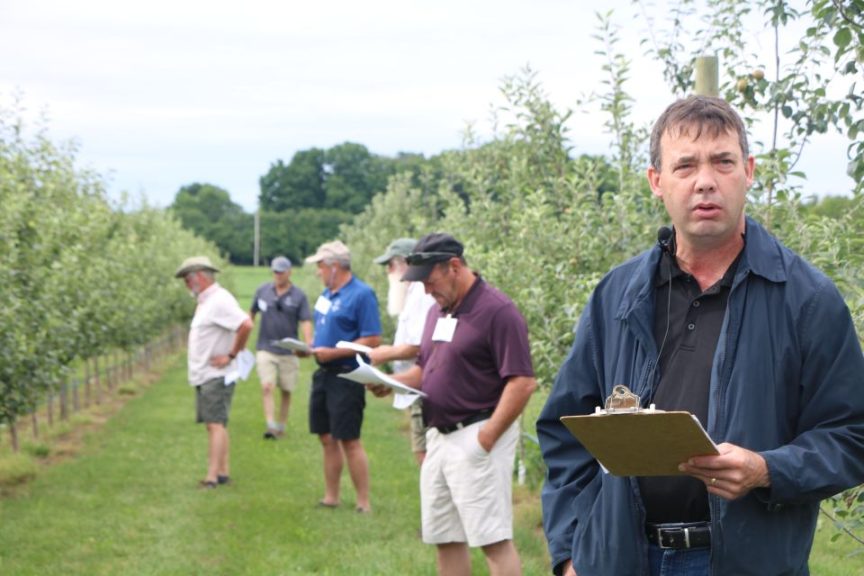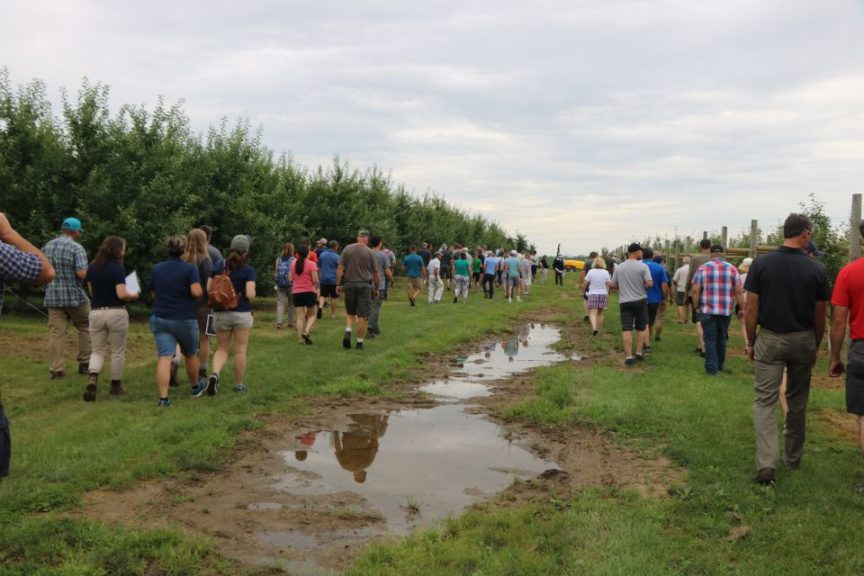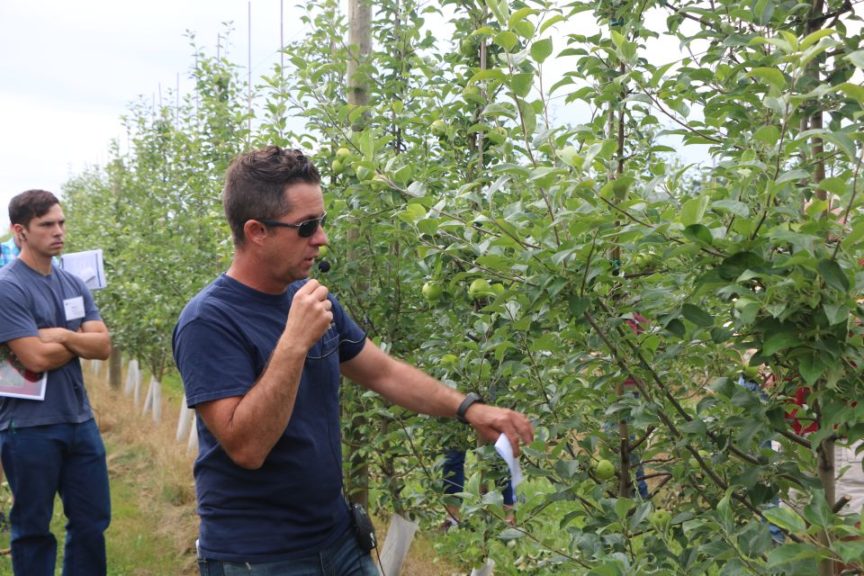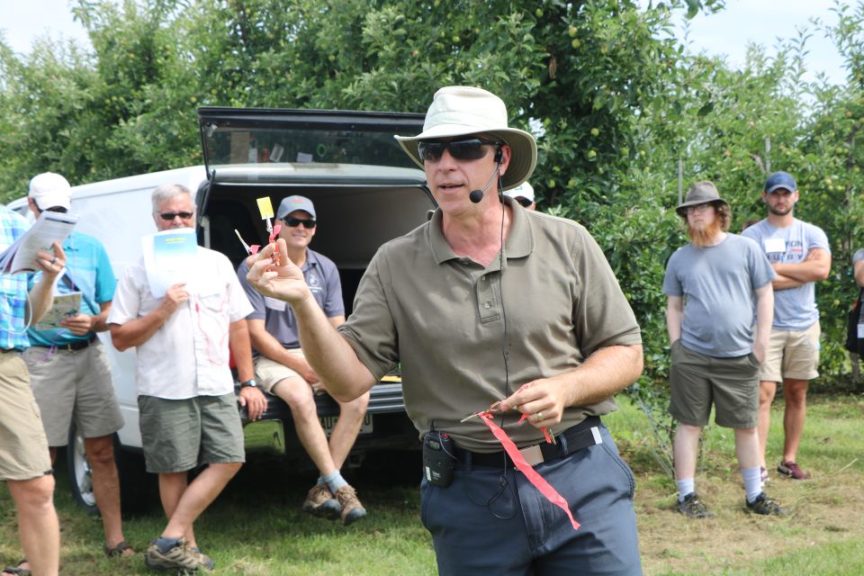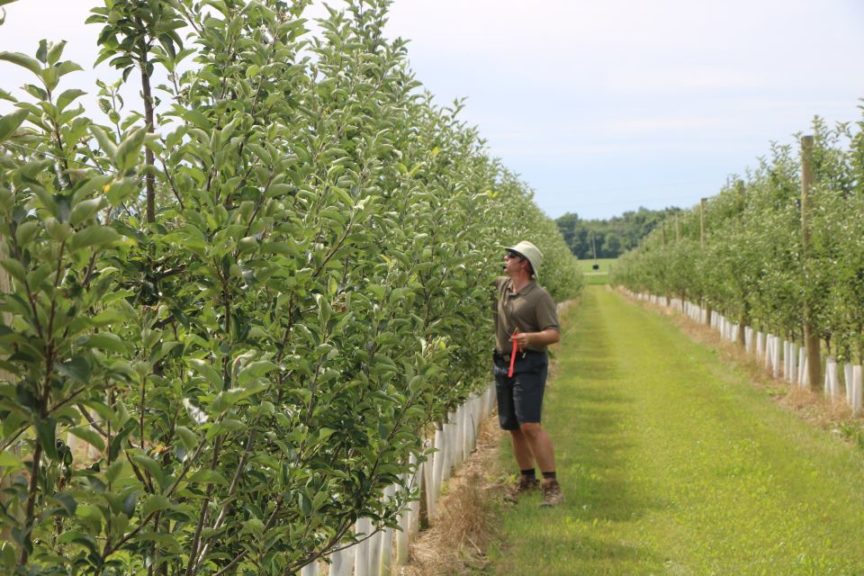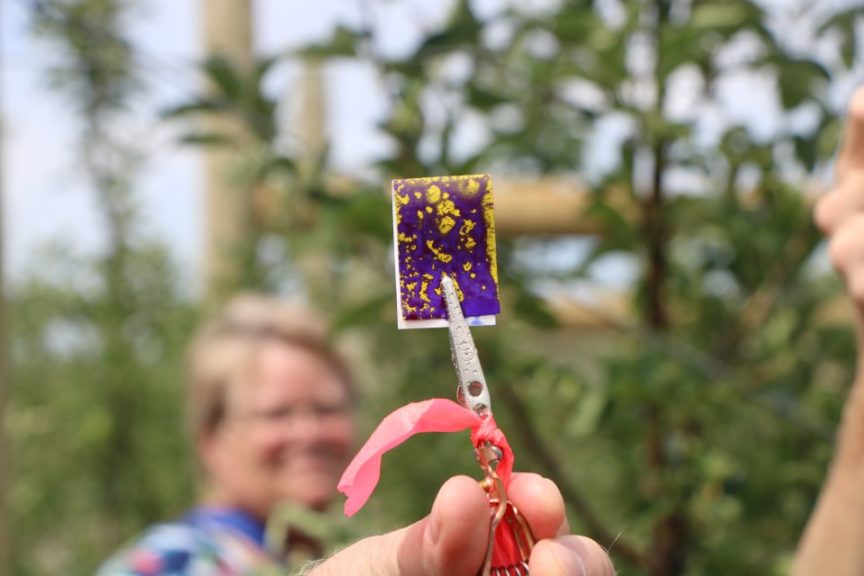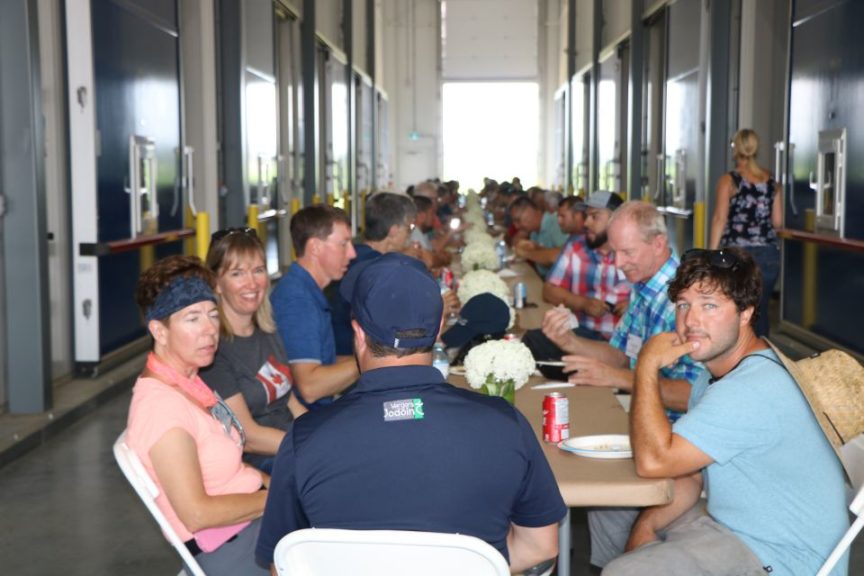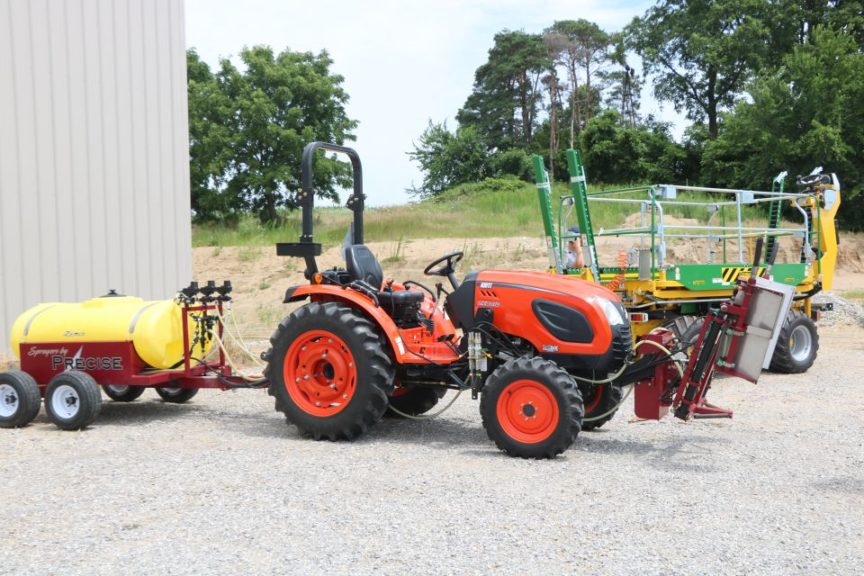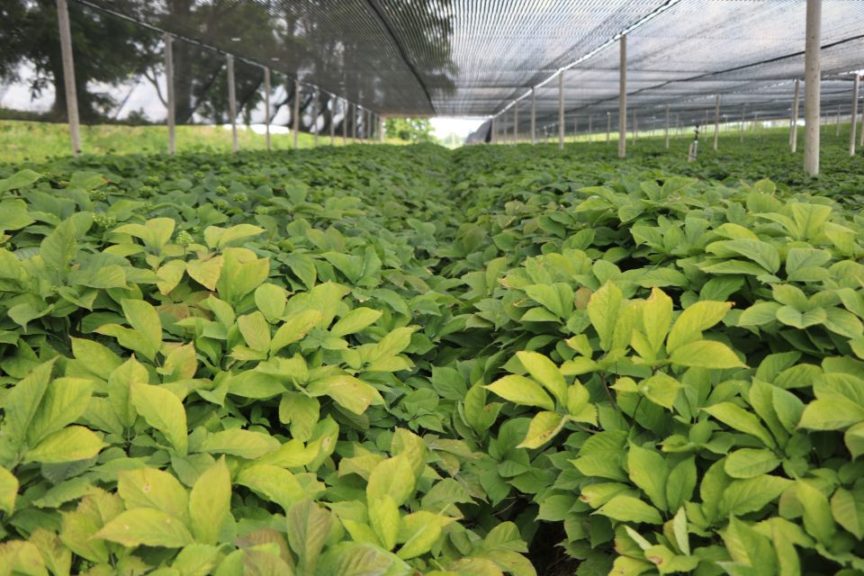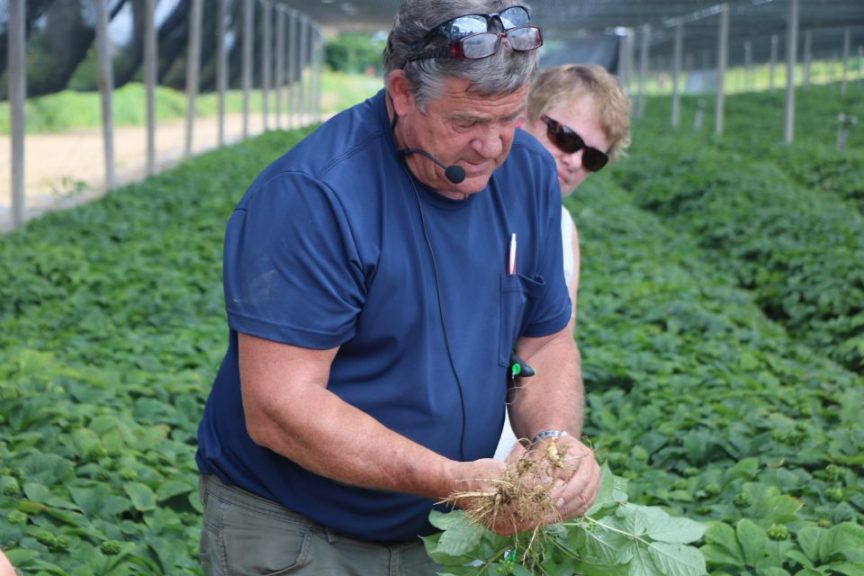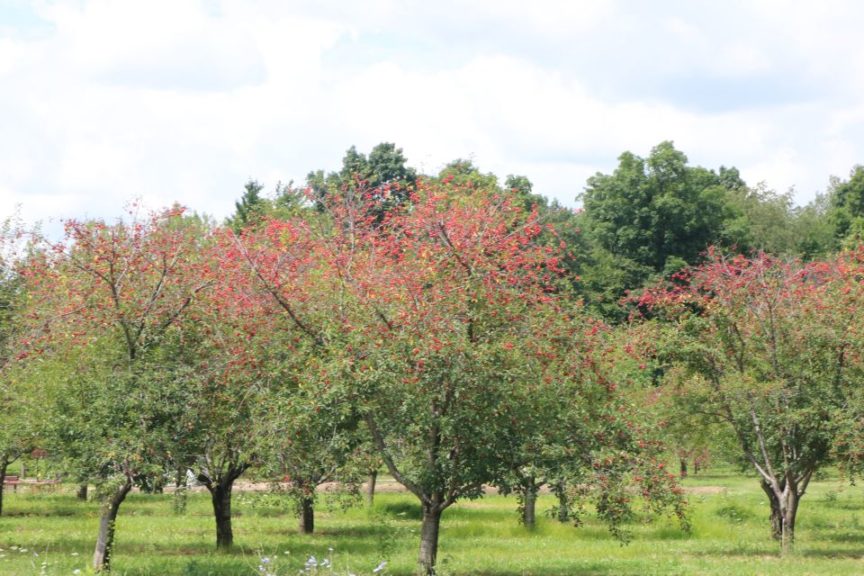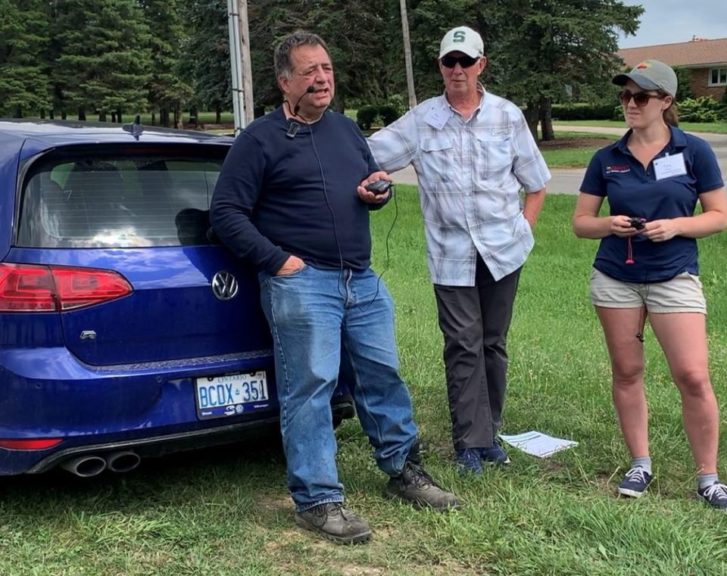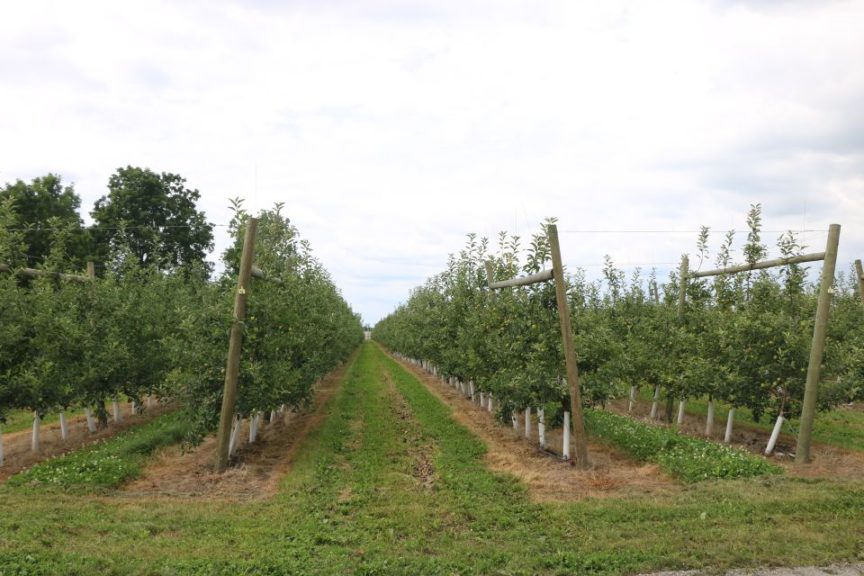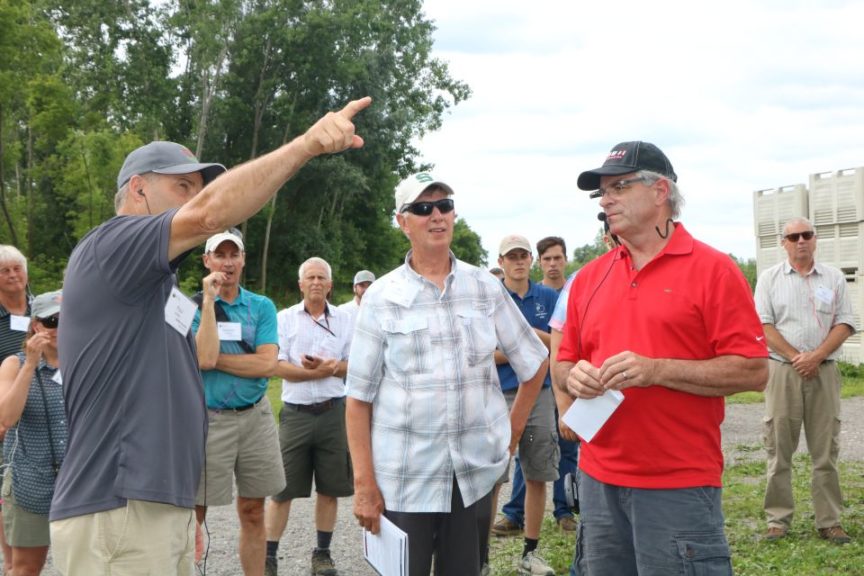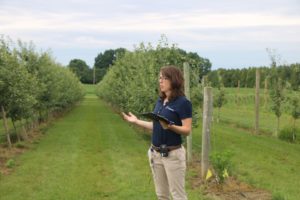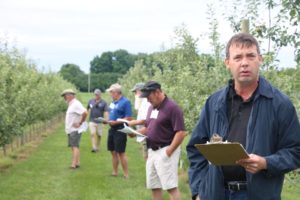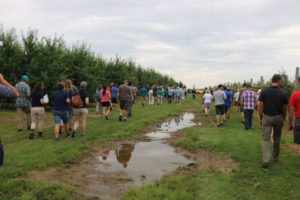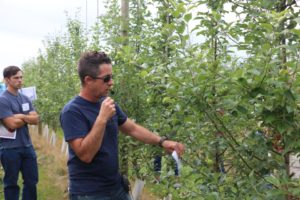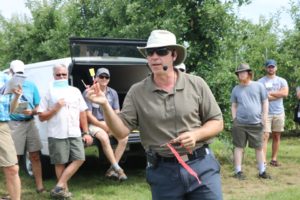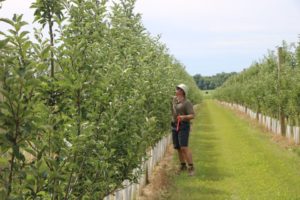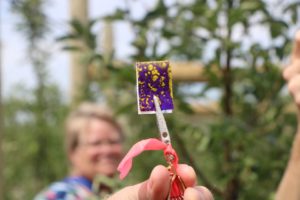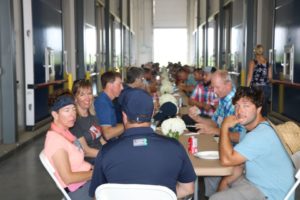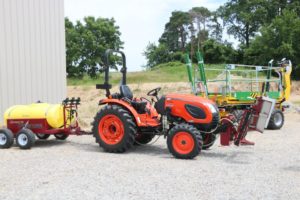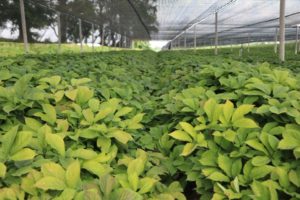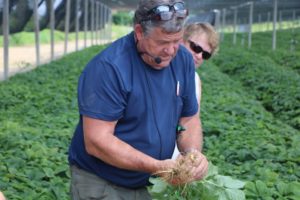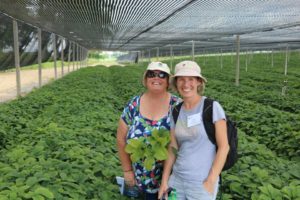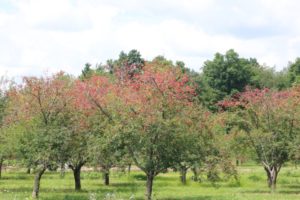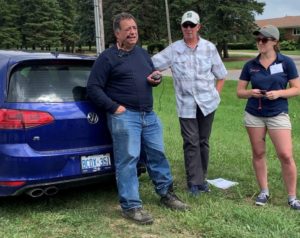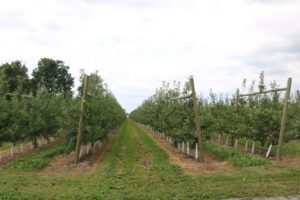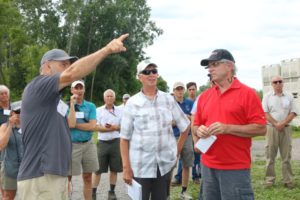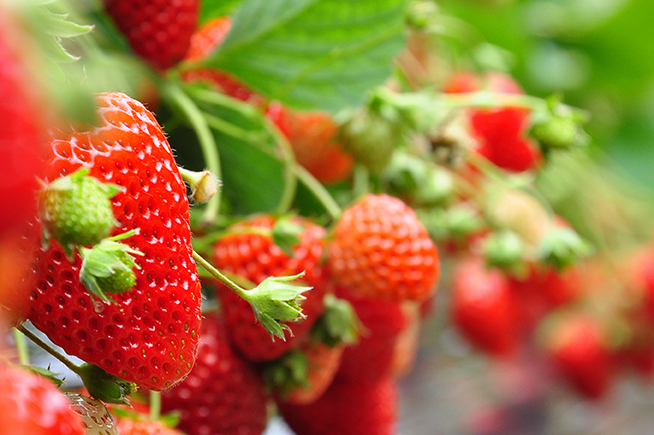The Heat Is up and on the Climb for Tree Fruit Farmers
As the International Fruit Tree Association’s (IFTA) Summer Tour in Hamilton, Ontario, the one thing everyone was talking about was the unpredictably hot and humid weather the Eastern part of the U.S. (and Canada, too) has been experiencing. Matt Peters, local tour host, of NM Bartlett said this area has reached “35°C — that means hot in Canada.” And for those not on the metric system, that’s 95°F, and undoubtedly packed some potent humidity.
That’s the type of growing season this region has had, which is known for tart cherries, asparagus, ginseng, and peaches. And growers in Canada are losing key fungicides, including metiram. And on the horizon is the loss of fungicides in the ethylene bisdithiocarbamate (EBDCs) group.
At IFTA board member Chris Hedges’ apple orchard, growers got a chance to see how his 2015 his 3-by-11foot planting of ‘Honeycrisp’ on G.41 are managed without EBDCs, what he calls his “personal experiment.” Hedges says he was nervous about welcoming a large group. A few weeks before the start of the tour, he thought, “this was probably the craziest idea I had.”
He’s been using a steady 1% Cueva (Certis USA) treatment and alternates a fire blight or powdery mildew spray with this planting.
“I don’t know if I’d do ‘Honeycrisp’ on G.41 again,” he says. “I’m a B.9 guy. I think B.9 has saved me more than once.”
His issue is branch orientation and training, plus a lot of vigor.
“These things have grown like crazy since the day they were planted,” he says. “I got so concerned about the top wire, I forgot about the bottom.”
But, he doesn’t see mechanization as the answer.
“I’d rather utilize the skills of my staff than mechanize our way out,” he says.
Getting Good Coverage
“We can do better” is exactly what Jason Deveau, Application Technology Specialist with the Ontario Ministry of Agriculture, Food and Rural Affairs, told growers about his crop-assisted spraying approach.
He gave growers a demo of a sprayer at factory settings, noting that using his recommendations will help them save money, spray more efficiently, and save waste.
“We’re used to seeing things drenched,” he bemoans.
He urges growers adjust a sprayer to the needs of a crop, seeking about 85 drops of spray per square centimeter. But, testing is needed. If you’re going to test your spray coverage, Deveau says it’s critical to place your water-sensitive paper in the same place, going the same way about 2/3 of the way up the tree and in the densest part of the canopy.
Growers need to get adequate coverage first and then determine rates. But, the biggest take-home message Deveau left growers with is there’s no one set rate per orchard.
“These calculations expire like milk,” he says. “Be prepared to get out of the tractor and adjust.”
Now for Something Completely Different
When someone asked Jim Lewis of Northland Ginseng Farm about how to tell a quality product from Chinese competitors, he simply quipped “buy Canadian.”
While a stop at a ginseng farm may seem a little odd, ginseng is the most valuable field crop grown in Ontario, with an estimated $130,000,000 farm gate value, according to 2012 figures. It’s also a complicated crop as it’s highly regulated, takes four or five years of growth before harvest, and sites can’t be reused after harvest.
This inability to reuse land complicates cultivation as the crop is susceptible to replant disease, so much so that cultivation must be avoided for upwards of 50 years. Ginseng also prefers sandy to sandy-loam soils.
“We’re running out of land,” Lewis says. But, many fruit and vegetable growers in Ontario like purchasing land from a ginseng farmer because the growing area is weed-free. Ginseng farmers also use a preplant fumigant as the crop is so sensitive. Ginseng is susceptible to many soil-borne diseases, including Cylindrocarpon root rot.
Ginseng is grown under shade cloth, which can be damaged with severe hailstorms. But the plant is most at risk for injury with spring frosts.
Lewis faces stiff competition in the Chinese market for younger roots as “China got a hold of our seed.” But, he sees his opportunity in harvesting 4-year-old plantings, where he says the taste of Canadian ginseng is what sets the Ontario market apart.
Plants are harvested in September or October and he needs about 60 people for the task. Automation isn’t an option as it can damage the roots. Roots are washed and graded and then dried in kilns before being shipped to Asia.
His production target is about 4,000 pounds, and last year was paid $25 to $34 per pound for dried ginseng, which is down from a few years ago where he was getting $45 to $50 per pound.
Change of Hands
While most of the day was positive, the last stop at Murray Porteous’ 35-acre Wafler tip system ‘Gala’ and ‘Ambrosia’ on M.9, was not. Porteous’ 8-foot narrow rows and 13-foot wide rows were designed to move his orchard into the future. But the priorities of the Porteous family have changed and for now the theme of the operation is maintenance, especially of low-density plantings.
“With good management, we’ve been able to keep them profitable for a long time,” he says. “We’re winding down the farm.”
After some issues getting foreign workers near harvest and a health scare, the family is looking to get out of the tree fruit business. But, Porteous is quite pleased with his Wafler tip system, which was inspired by an IFTA tour stop in New York a few years ago. He says he wraps support wires around trees, which as the wires cut into the trees, they will likely force branching.
When asked what local growers think about his move toward the Wafler tip system, Porteous says, “nobody said anything to me, they must think I’m crazy.”
This newer planting of 35 acres has faced significant damage from black stem borer, noting he had to replace 1,000 trees last year and 100 so far this year. The orchard also suffered dime-sized hail damage last year and an 80-mph tornado. He says he notices issues with black stem borer particularly in low, wet areas.
Porteous says he likes the simplicity of tasks with the system. He can give a worker a task and about three hours later, they’re done with the block and moving on.
“For us, this is as good as it gets,” he says.





